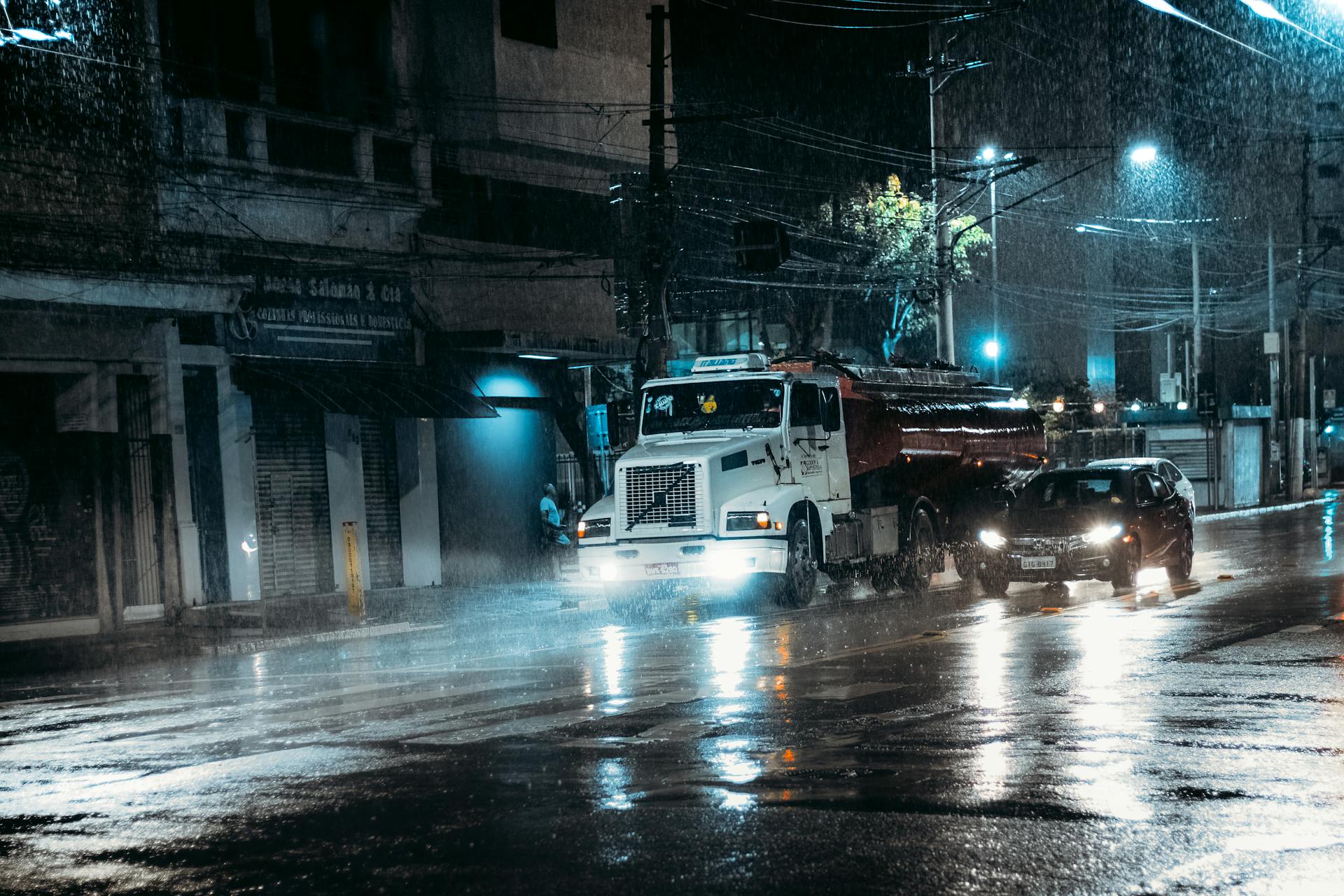
More Fatal Truck Wrecks Happen at Night
Imagine you’re driving a Texas highway at night. There’s a little bit of rain, nothing serious, so you flick on the wipers. The rain gets a little heavier and you head around a corner. Suddenly, traffic has stopped. It looks like a vehicle hydroplaned and smashed into the median wall. Not a big wreck, but everyone is slowing down to ensure the driver can safely move the vehicle off to the side of the road.
A truck comes around the corner, seeing the stopped cars, the trucker locks up the brakes. As the trailer jackknifes, the driver loses control and slides into the line of cars as the truck wheels skid across the wet pavement. That small fender bender has now turned into a serious wreck, with potential fatalities. This fictitious situation is a whole lot closer to reality and happens every day; the Car Crash Captain explains.
Rain, Fog, Snow, and Ice
On a good day, a big rig doesn’t stop nearly as quickly as a passenger vehicle. In fact, even in optimum conditions, those semi-trucks are looking at 40% more stopping distance than a regular car. That means at 60mph it takes your passenger car about 240 feet to stop, and that fully loaded semi takes 310 to 355 feet to stop.
Now throw in some bad weather and things get even worse. Rain can cause hydroplaning, snow and ice cause slick surfaces, and fog cuts down reaction time. Even though the heavy weight of those trucks allows them to retain traction for longer, they still can’t stop nearly as quickly.
Rain doesn’t just make things wet, it magnifies risk.
You Can’t See in the Dark
If you have driven in the daytime, and then during the night, you know it’s a bit harder to drive at night. Even those modern headlights that bore through the eyeballs and into the soul of oncoming traffic can only light up so much. Your peripheral vision declines, depth perception changes, and lights from other drivers can become disorienting.
Often truck drivers are on tight schedules to get to their destination. They have to drive during the night to ensure on-time deliveries. Even though there’s a lot less traffic on the roads at night, the NHTSA reports that drivers are three times more likely to be involved in fatal crashes during the night.
How Weather and Nighttime Affect Liability
Even though weather worsened the wreck, it’s not an excuse. Trucking companies must be prepared to drive in the day, the night, during rain, snow, sleet, hail, and all sorts of weather. They have to be prepared to stop if the weather gets too bad, and when they do push through their vehicles must be maintained to ensure all lights are working, brakes are maintained, and their logs are kept up-to-date.
What happens when a trucker thinks they can just push on through and the rules of physics don’t apply? Like the hypothetical scenario in our introduction? Victims are entitled to compensation.
When Has this Actually Happened?
You might be thinking, “Okay, but is it really that bad? Does this really happen?” Yes, it certainly does.
Take the case of Ronal Britt. A 61-year-old commercial truck driver from Lafayette, this driver wasn’t a stranger to inclement weather. And it seemed that he could get away with driving a bit fast for conditions… until he couldn’t. On October 23, 2023 Britt was going way too fast when he came into an area of fog. He couldn’t see the cars stopped in the road in time, and he plowed into the back of a stopped vehicle killing the driver and seriously injuring the passenger. He was later arrested on multiple accounts of negligent homicide, negligent injuring, reckless operation, and other traffic offenses. Read more on the AP site.
The point is – this happens way too often.
Why You Need Herbert Law Group
That is why we are here. We know the law, we know how to recreate truck wrecks, and we know how to fight for you, the victim.
If weather was involved in your wreck, or if it happened in broad daylight with clear roads, we’ll help you receive the justice you deserve. First, we need to know what happened. Call our offices at 214-414-3808, and we’ll have a free conversation to determine just how we can help. Or, you can simply fill out the contact form on our site and we’ll reach out to you.